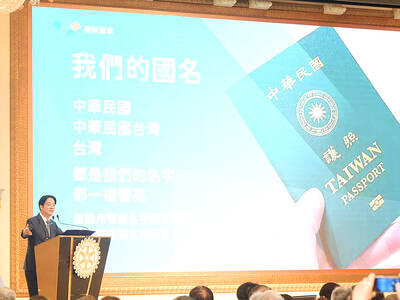Krabi covers an area of 4,709 square kilometers and is located 814 kilometres south of Bangkok. Krabi's major attractions are located largely along its extensive coastline, which contains several well-known beaches and bays, and numerous offshore tropical islands.
History of Krabi
From archaeological discoveries, it is believed that Krabi was one of the oldest communities in Thailand dating from the prehistoric period. It is also believed that Krabi was once the town of Ban Thai Samo, one of 12 royal cities that used a monkey as the town symbol. Krabi was a dependency town of the Nakhon Si Thammarat Kingdom. Another legend indicates that the town may have taken its name after the meaning of Krabi, which means sword. This may have stemmed from a legend that says an ancient sword was unearthed prior to the city's founding. Later, the sword became a symbol of Krabi.
Geography of Krabi
Krabi's mountainous physical geography is broken by highlands and plains on the mainland; the provincial administration also covers more than 130 large and small islands in the Andaman Sea. Natural forest cover is chiefly mangrove and Cassia trees. Krabi's sandy clay soil conditions are perfect for a variety of agricultural produces, including: rubber trees, palms, oranges, coconuts, and coffee. The Krabi River flows 5 kilometres through the town and falls into the Andaman Sea at Tambon Pak Nam.
Travel around Krabi
To getting around the town is very convenient by local taxi (Tuk Tuk). Some attractions like Hat Noppharat Thara, Susan Hoi, Ao Nang, Wat Tham Suea, Namtok Huai To, and Ao Luek can be reached by local mini-bus (Song Thaeo). The mini-buses depart from Vogue Department Store on Maharat Road in Krabi Town. Trips to other attractions can be made by taxi and rental car.
Attraction
The popular Phi Phi Islands consists of 2 separate islands famed for their spectacular landscapes, beautiful beaches and spectacular island reefs teeming with variety of coral fishes. Ideal place to enjoy scuba diving. Its paradise-like appearance can best be seen in the movie, The Beach, where most of the filming occurred. Koh Lanta Yai is a predominantly Muslim fishing island where many resorts have recently sprouted up. The island is covered with forested hills sweeping down to numerous sandy bays on the western side. A good alternative for those seeking peace and quiet.
On a smaller scale, an island worth visiting, but with fewer tourists, is Koh Hong (Room Island), an island encircled on 3 sides by towering limestone formations. The cove inside, with its crystal clear waters and pristine beach, inspires images of a deserted island. Closer to the mainland are Koh Poda and Koh Hua Khwan (Chicken Island), ideal spots for snorkeling and playing in the waters and beaches. Mountaineers and rock climbing fanatics will love the climbing trails at Railei Bay. With a cliff wall dotted with deep niches and stalactite hauls, the runs offer various levels of difficulty satisfying to challenge novice to experts. But the main attractions are the sun, scenery and the ambience. Nowhere else can you start climbing straight from the beach, with the promise of a cooling dip into the shimmering turquoise water after mastering a difficult route.
Slightly north of town is Wat Tham Sua (Tiger Cave Temple) named after a rock formation resembling a tiger paw. Regarded as one of the most renowned forest temples in the south, the main hall was built inside the cave, providing a peaceful environment for practicing meditation. A circular path in the nearby forest offers a pleasant walk and a 300-meters high staircase leads to a large Buddha image and Buddha footprint perched atop the cliff. Great view of the province.
Regarded as the symbol of Krabi, the Khao Khanap Nam (Hill Beside the Water) rises high above the waters before the city. A long tail boat will quickly transport you to the site, where one has to climb a staircase to see caves with stalactites and stalagmites. Highly interesting archaeological remains were discovered here, along with some human remains believed to be earlier immigrants.
Aside from frolicking in the sun and playing in the waters, most sport enthusiasts enjoy the diverse marine surroundings by partaking in sea kayaking. The most beautiful bay of mangrove forests in Thailand is at Ao Thalan (Thalan Bay). Towering karst formations and lovely offshore islands surrounding the bay creates complex channels for maneuvering your kayaks.
Archaeological buffs should not miss the rewarding finds in Tham Hua Kalok (Skull Cave). From the entrance, the cave is divided into 2 routes with the left one leading to a vast open-aired chamber and the right to a closed hall. Unusually large skulls were also originally found in this cave.

LONG FLIGHT: The jets would be flown by US pilots, with Taiwanese copilots in the two-seat F-16D variant to help familiarize them with the aircraft, the source said The US is expected to fly 10 Lockheed Martin F-16C/D Block 70/72 jets to Taiwan over the coming months to fulfill a long-awaited order of 66 aircraft, a defense official said yesterday. Word that the first batch of the jets would be delivered soon was welcome news to Taiwan, which has become concerned about delays in the delivery of US arms amid rising military tensions with China. Speaking on condition of anonymity, the official said the initial tranche of the nation’s F-16s are rolling off assembly lines in the US and would be flown under their own power to Taiwan by way

‘OF COURSE A COUNTRY’: The president outlined that Taiwan has all the necessary features of a nation, including citizens, land, government and sovereignty President William Lai (賴清德) discussed the meaning of “nation” during a speech in New Taipei City last night, emphasizing that Taiwan is a country as he condemned China’s misinterpretation of UN Resolution 2758. The speech was the first in a series of 10 that Lai is scheduled to give across Taiwan. It is the responsibility of Taiwanese citizens to stand united to defend their national sovereignty, democracy, liberty, way of life and the future of the next generation, Lai said. This is the most important legacy the people of this era could pass on to future generations, he said. Lai went on to discuss

MISSION: The Indo-Pacific region is ‘the priority theater,’ where the task of deterrence extends across the entire region, including Taiwan, the US Pacific Fleet commander said The US Navy’s “mission of deterrence” in the Indo-Pacific theater applies to Taiwan, Pacific Fleet Commander Admiral Stephen Koehler told the South China Sea Conference on Tuesday. The conference, organized by the Center for Strategic and International Studies (CSIS), is an international platform for senior officials and experts from countries with security interests in the region. “The Pacific Fleet’s mission is to deter aggression across the Western Pacific, together with our allies and partners, and to prevail in combat if necessary, Koehler said in the event’s keynote speech. “That mission of deterrence applies regionwide — including the South China Sea and Taiwan,” he

UNPRECEDENTED: In addition to the approved recall motions, cases such as Ma Wen-chun’s in Nantou are still under review, while others lack enough signatures The Central Election Commission (CEC) announced yesterday that a recall vote would take place on July 26, after it approved the first batch of recall motions targeting 24 Chinese Nationalist Party (KMT) lawmakers and Hsinchu Mayor Ann Kao (高虹安). Taiwan is in the midst of an unprecedented wave of mass recall campaigns, following a civil society push that echoed a call made by Democratic Progressive Party (DPP) caucus whip Ker Chien-ming (柯建銘) in January to initiate signature drives aimed at unseating KMT legislators. Under the Civil Servants Election and Recall Act (公職人員選舉罷免法), Taiwanese can initiate a recall of district-elected lawmakers by collecting